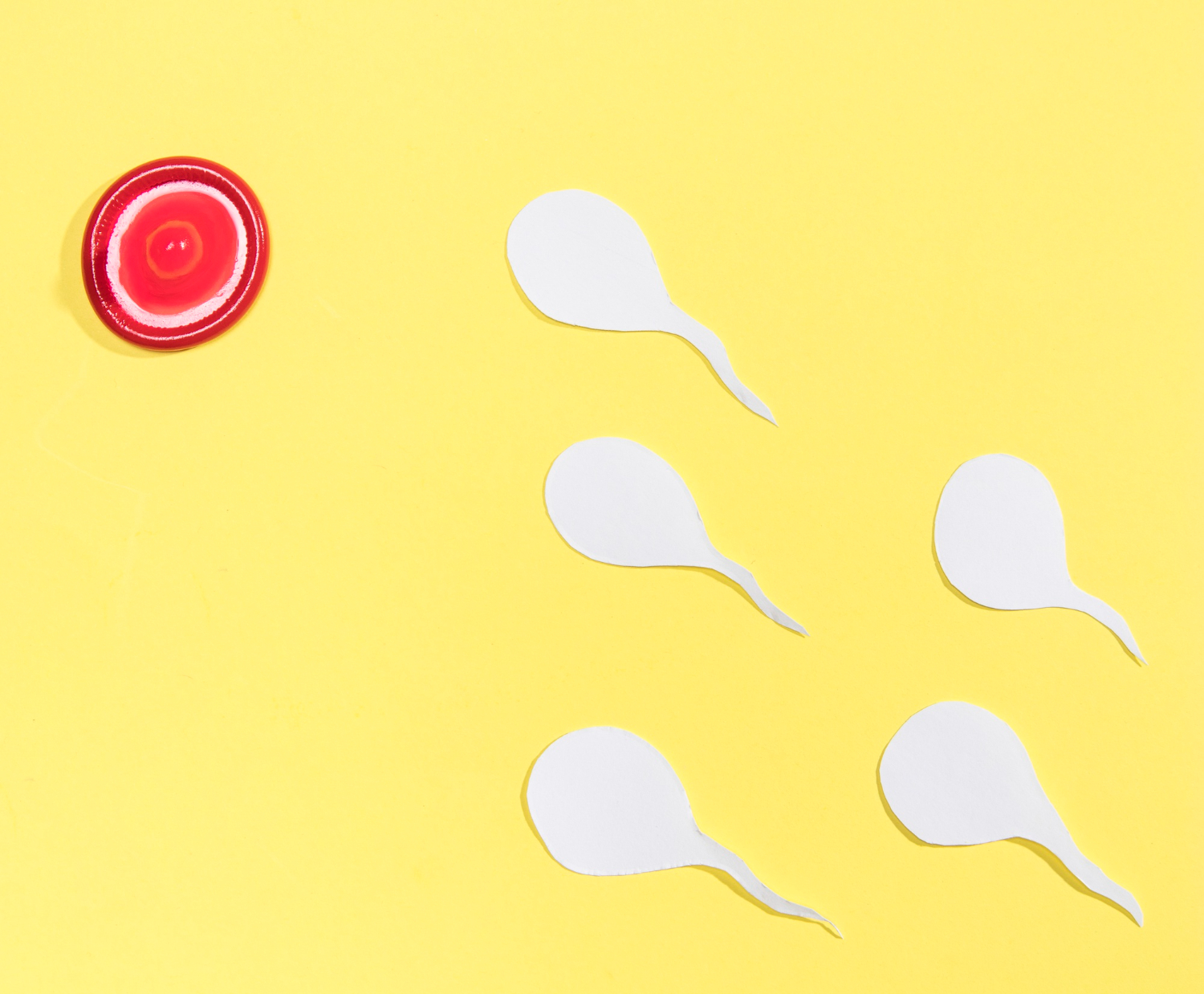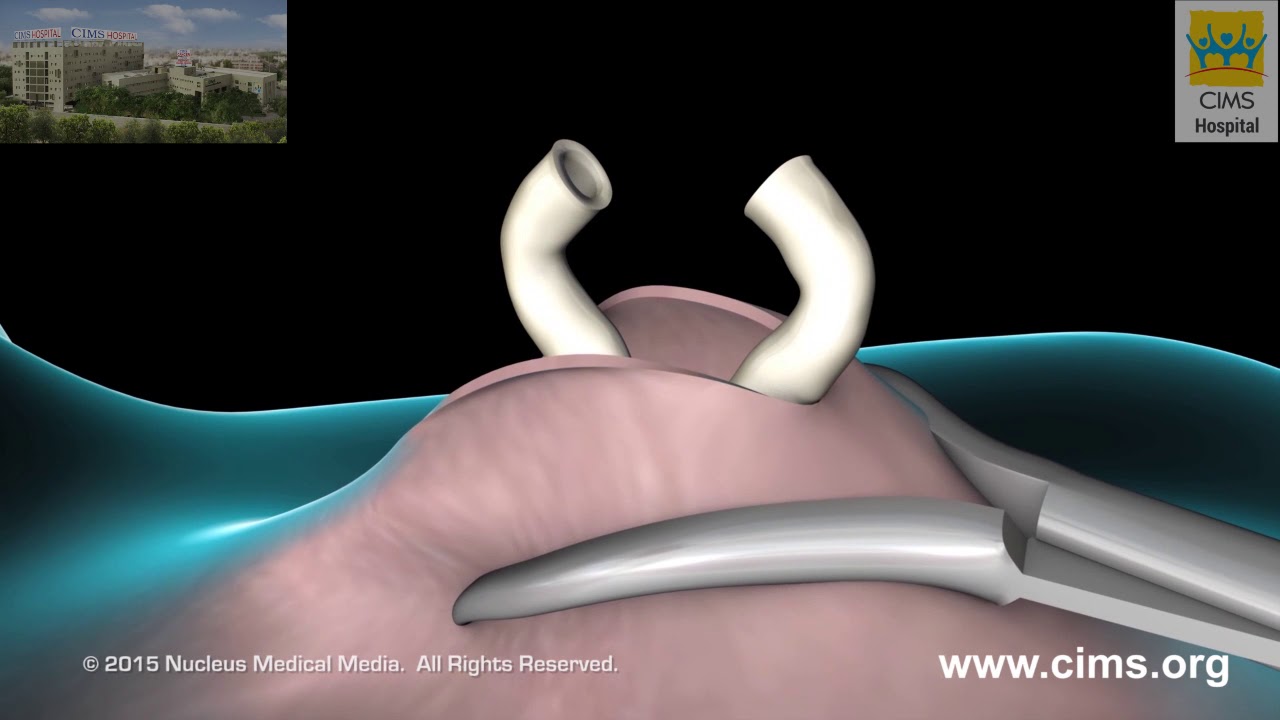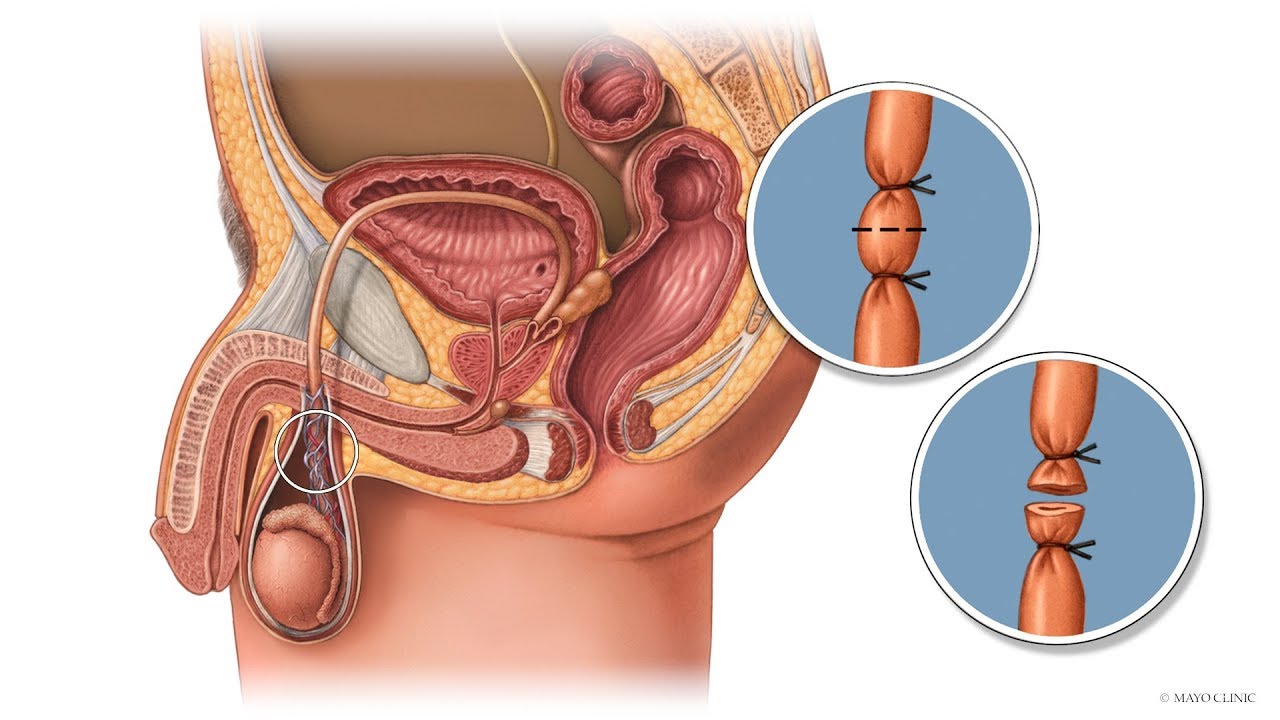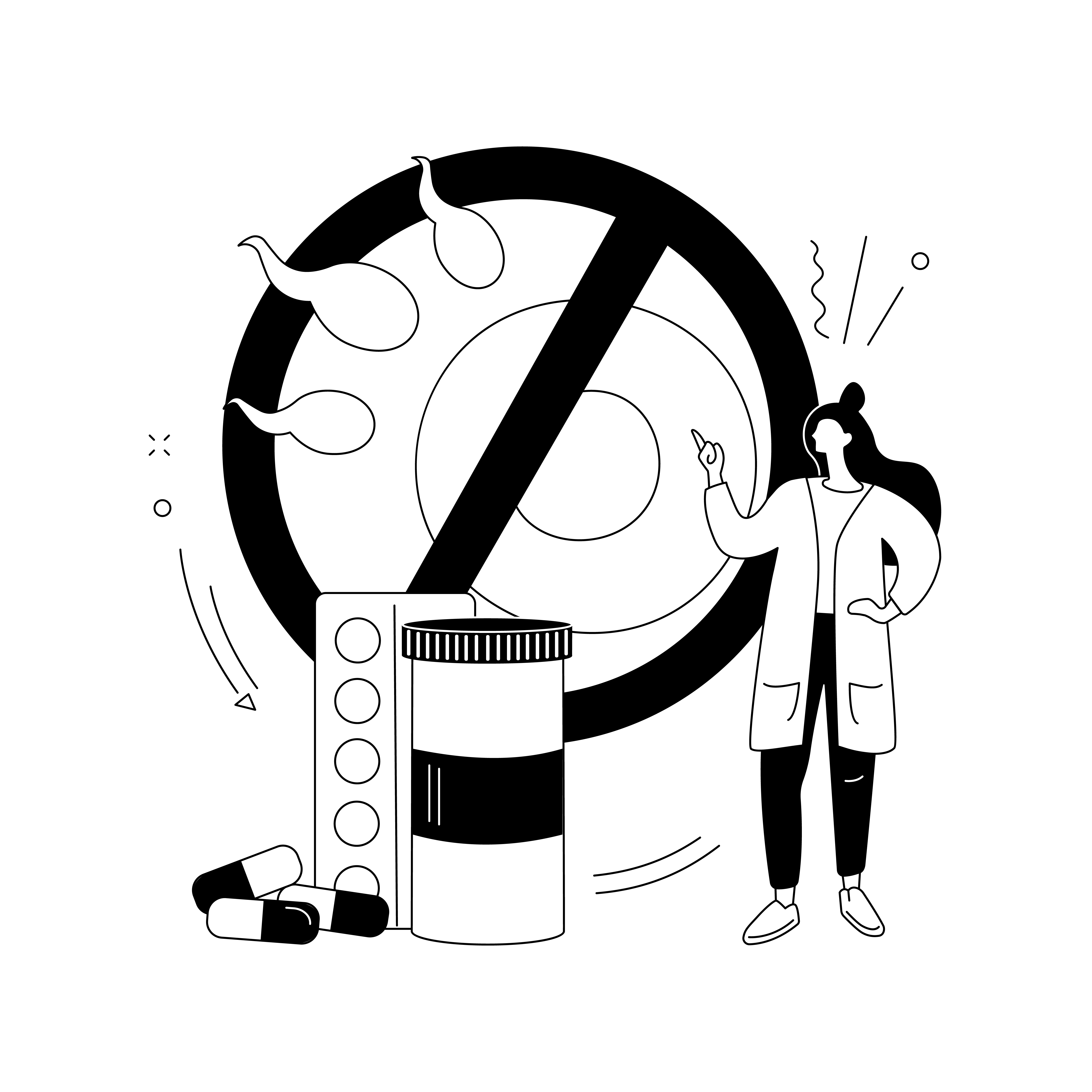Vasectomy - Overview Of Male Contraception Procedure
A vasectomy is a method of male contraception that disables the sperm supply from the reproductive system. Sperm tubes are surgically cut and sealed off. Vasectomy is a simple procedure that often only requires local anesthesia and may be done on an outpatient basis.
Author:Suleman ShahReviewer:Han JuSep 02, 202226.2K Shares409.4K Views

A vasectomyis a method of male contraception that disables the sperm supply from the reproductive system. Sperm tubes are surgically cut and sealed off.
Vasectomy is a simple procedure that often only requires local anesthesia and may be done on an outpatient basis.
It would be best if you were very sure you don't want any more children before undergoing a vasectomy. While it's true that vasectomy may be reversed, men should still consider it a permanent contraception method.
The risk of contracting a sexually transmitted disease after a vasectomy is not reduced.
What Is A Vasectomy?
Vasectomy is a surgical treatment for male sterilization. Its intended use is as a permanent method of contraception, and thus its efficacy cannot be overstated. Most men opt to perform their vasectomy at a doctor's office, hospital, or clinic.
The tiny tubes in your scrotum that transport sperm are either severed or plugged so that no sperm can escape and potentially start a pregnancy. The operation is so fast that you may recover quickly and return home the same day. And it has a near-perfect success rate as a pregnancy preventative.
Vasectomy procedures may either include making an incision or not. In addition to reducing recovery time, no-cut procedures reduce the likelihood of infection and other problems.
Vasectomies are typically performed with the intention of being permanent and thus irreversible. A vasectomy is permanent and removes the ability to father children, so it should only be performed if the patient is certain he does not want to have sexual relations with anybody in the future.
Vas deferens is the medical term for the tubes in your scrotum that are cut off during a vasectomy.

Vasectomy – CIMS Hospital
Is Vasectomy Permanent?
A vasectomy is an option for permanent contraception if you and your spouse want to avoid having children. Males may be permanently sterilized with a vasectomy.
Pregnancy after vasectomy is possible via several different means. Either vasectomy or sperm extraction surgery are options for men who have had the procedure. Many people seek advice from professionals before making this choice.
While the actual vasectomy procedure only takes around 20 minutes, the reversal procedure might take anywhere from 4 to 6 hours. The process is significantly more intricate and sensitive. And it's not even a given that doing so would result in a pregnancy.
There are alternatives to vasectomy reversal if you and your spouse decide you want to have a family after you've already had a vasectomy. In vitro fertilization(IVF) is done with a sperm extraction procedure.
Extraction of sperm from the testis and aspiration of sperm from the epididymis are both very successful procedures, with a combined success rate of over 98%. A tiny incision is made in the testicles or the epididymis, and sperm is removed from there.
How Vasectomy Works
Your testicles are responsible for producing sperm, the tiny cells that fuse with an egg to create a pregnancy. The process of making semen begins when sperm travels through the vas deferens, a pair of tubes connecting the gonads (cum). It's possible to become pregnant from the sperm in your semen if it makes its way into a woman's vagina.
The vas deferens tubes are closed up or surgically severed after a vasectomy. Sperm cells do not leave the testicles and are instead metabolized by the body.
You will no longer produce sperm in your semen (cum) beginning about 3 months following a vasectomy. However, you will maintain the same sperm count as previously. Quite simply, it won't contain any sperm.
The sensations associated with ejaculating (cumming) and experiencing an orgasmic experience are unaffected by vasectomy surgery. After a vasectomy, your sperm (semen) will still feel and taste the same, but it won't be able to fertilize an egg.
Procedure Of Vasectomy
A vasectomy is a simple and painless medical operation. Most of the time, you'll be able to return home the same day. There are two types of vasectomy:
Conventional Vasectomy
Your scrotum will be numbed with a local anesthetic before the procedure begins. To access the tubes that expel sperm from the testicles, they make two tiny incisions, one on each side of the scrotum (vas deferens).
Cuts are made in each tube, and a fraction of the tube is removed. The tubes' ends are then secured by being tied off or heated to form a seal. Dissolvable sutures are used to close wounds, and they disappear on their own after roughly a week.
No-scalpel Vasectomy
First, you'll have some local anesthesia in your scrotum to make you comfortable for the doctor. A small puncture is made in the scrotum's skin to access the tubes. This eliminates the need for a scalpel in most cases.
After that, the tubes are tied up or sealed off just as they would be during a regular vasectomy.
The treatment causes little blood loss and often requires no sutures. Many people choose this method because they believe it is less invasive and dangerous than a traditional vasectomy.
Vasectomy Facts
- A vasectomy has a success rate of over 99%.
- It is thought to be permanent, so you won't have to worry about birth controlagain once it is done.
- It does not affect your sexual desire or capacity to enjoy sex. You'll still have erections and ejaculate, but your sperm will be missing.
- Because the tubes that lead to the penis still have sperm, you'll need to use birth control for at least 8 to 12 weeks after the procedure.
- Following the surgery, up to two sperm tests are performed to ensure that all of the sperm has been removed.
- Your ball sack (scrotum) may bruise, swell, or become uncomfortable; some men may have continuous discomfort in their testicles.
- There is a slight risk of infection, as with any operation.
- It's quite tough to undo, so be sure it's suitable for you.
- Having a vasectomy does not prevent the spread of STIs; hence, the use of condoms is recommended.

Mayo Clinic Minute: Why a vasectomy is a great option for birth control
Concerns About Vasectomy
Many men are concerned that a vasectomy would create major complications, but these concerns are unwarranted.
- A vasectomy does not affect your sex desire or masculinity other than stopping you from fathering a kid. Men have even claimed increased sexual pleasure after a vasectomy.
- There is a highly minimal chance that your testicles, penis, or other reproductive organs may be damaged during surgery. In very rare circumstances, injury to the blood flow may result in the loss of a testicle, although this is uncommon if your surgeon is proficient.
- Even though there have been worries that a vasectomy could lead to testicular or prostate cancer, no such link has been found.
- As with cancer worries, no correlation between vasectomy and cardiac issues seems to exist.
- Minor discomfort and pulling or tugging may occur during surgery, although significant pain is uncommon. In the same way, you might feel some pain after surgery, but for most men, this pain is mild and goes away in a few days.

5 Myths About Vasectomies - Jesse Mills, MD | The Men's Clinic, UCLA Health
Side Effects
Assuredly secure methods are used. You may have some minor discomfort, scrotal swelling, and maybe a little blood loss in the hours and days after the procedure.
However, these occurrences are uncommon and, when they do occur, are usually minor. Only about one to two percent of men experience chronic discomfort. Bruising, inflammationand infection are possible, albeit unlikely, complications.
It's rarely life-threatening, but something you should discuss with your doctor. There are also more and less common problems that might arise:
- Experiencing pain or discomfort in one's testicles.
- Caused by a granuloma in the sperm (a hard lump or inflammation caused by leaking sperm).
- Spermatocele (a cyst in the tube that collects sperm)
- A hydrocele (a sac of fluid around a testicle that causes swelling in your scrotum)
People Also Ask
What Are Two Disadvantages Of Getting A Vasectomy?
- Hematomas, or blood collections, may develop due to bleeding, leading to severe swelling.
- A post-vasectomy pain syndrome, an infection, or both are possible complications.
Can You Still Get Pregnant If You Get A Vasectomy?
Although vasectomy is a permanent method of birth control, it is also incredibly effective. Even though pregnancies after vasectomy sometimes occur, they are scarce. When this does happen, it is frequently the consequence of a surgical error or improper postoperative care.
Do You Still Have Sperm If You Have A Vasectomy?
As before, the testes produce sperm, but these sperm eventually die and are digested. It is true that a guy who has had a vasectomy may still produce semen and ejaculate.
Sperm isn't present in the semen, however. Testosterone levels and other characteristics of male sex life are unaffected.
What Happens To A Man When He Gets A Vasectomy?
The vas deferens tubes are closed up or surgically severed after a vasectomy. Sperm cells do not leave the testicles and are instead metabolized by the body.
The absence of sperm in your semen (cum) beginning about 3 months following a vasectomy means that it can no longer be used to conceive a child.
Conclusion
Vasectomy is a successful method of avoiding pregnancy but is also irreversible. While pregnancy after vasectomy is conceivable, it is very uncommon.
It is frequently the consequence of failing to follow postoperative instructions or a surgical error. Vasectomies may also be reversed, although it is a more complex process.
Although vasectomy is very efficient in preventing pregnancy, it does not provide any protection against STDs like chlamydia or HIV/AIDS. Even after a vasectomy, sexually active men at risk for STDs should utilize additional protection, such as condoms.

Suleman Shah
Author
Suleman Shah is a researcher and freelance writer. As a researcher, he has worked with MNS University of Agriculture, Multan (Pakistan) and Texas A & M University (USA). He regularly writes science articles and blogs for science news website immersse.com and open access publishers OA Publishing London and Scientific Times. He loves to keep himself updated on scientific developments and convert these developments into everyday language to update the readers about the developments in the scientific era. His primary research focus is Plant sciences, and he contributed to this field by publishing his research in scientific journals and presenting his work at many Conferences.
Shah graduated from the University of Agriculture Faisalabad (Pakistan) and started his professional carrier with Jaffer Agro Services and later with the Agriculture Department of the Government of Pakistan. His research interest compelled and attracted him to proceed with his carrier in Plant sciences research. So, he started his Ph.D. in Soil Science at MNS University of Agriculture Multan (Pakistan). Later, he started working as a visiting scholar with Texas A&M University (USA).
Shah’s experience with big Open Excess publishers like Springers, Frontiers, MDPI, etc., testified to his belief in Open Access as a barrier-removing mechanism between researchers and the readers of their research. Shah believes that Open Access is revolutionizing the publication process and benefitting research in all fields.

Han Ju
Reviewer
Hello! I'm Han Ju, the heart behind World Wide Journals. My life is a unique tapestry woven from the threads of news, spirituality, and science, enriched by melodies from my guitar. Raised amidst tales of the ancient and the arcane, I developed a keen eye for the stories that truly matter. Through my work, I seek to bridge the seen with the unseen, marrying the rigor of science with the depth of spirituality.
Each article at World Wide Journals is a piece of this ongoing quest, blending analysis with personal reflection. Whether exploring quantum frontiers or strumming chords under the stars, my aim is to inspire and provoke thought, inviting you into a world where every discovery is a note in the grand symphony of existence.
Welcome aboard this journey of insight and exploration, where curiosity leads and music guides.
Latest Articles
Popular Articles
